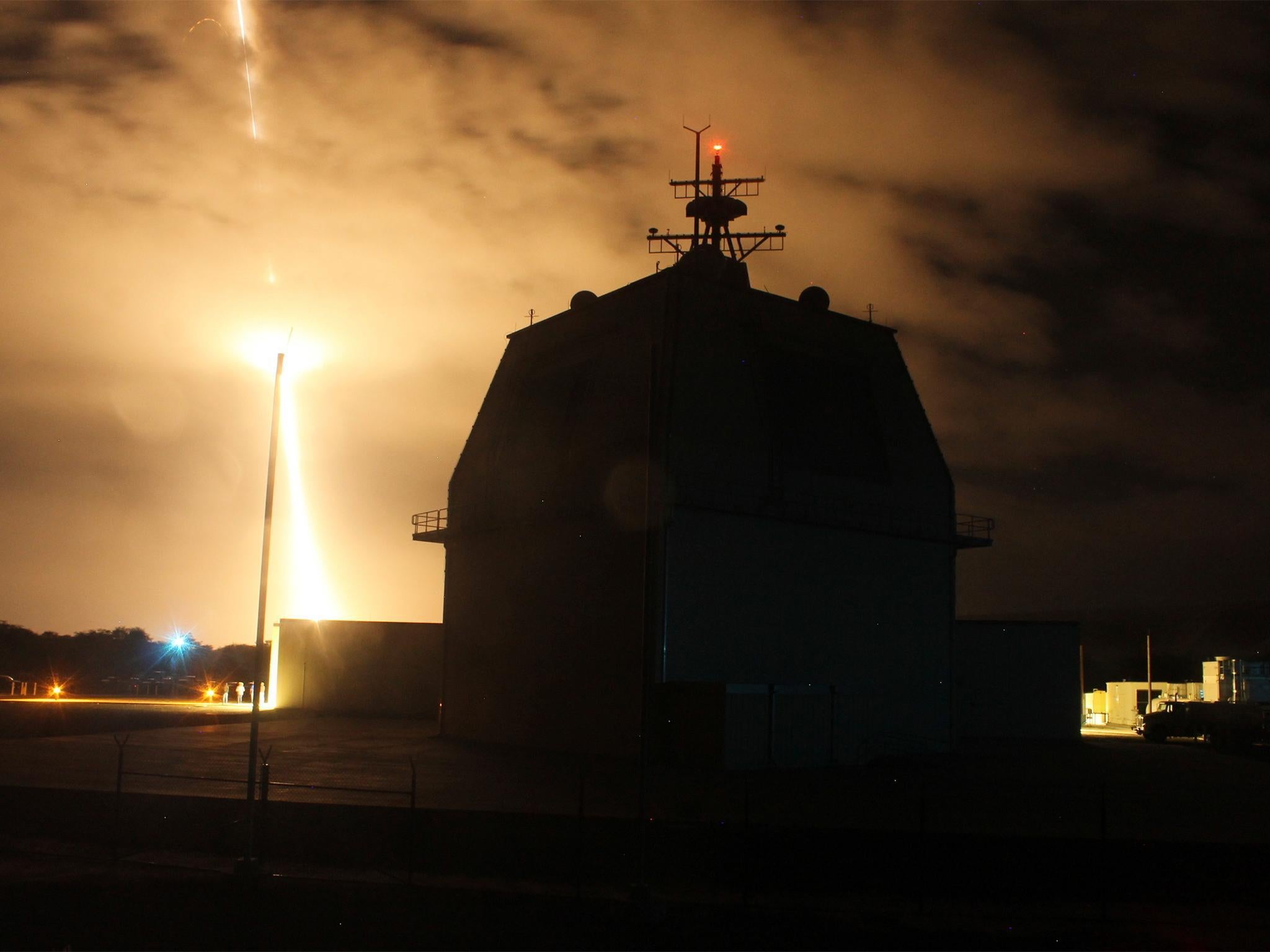North Korea nuclear threat: Japan to strengthen ballistic missile defence with new radar stations and interceptors
Prime Minister Shinzo Abe and his cabinet approve proposals to invest £1.5bn in new protective measures

Japan formally decided on Tuesday it would expand its ballistic missile defence system with US-made ground-based Aegis radar stations and interceptors, in response to a growing threat from North Korean rockets.
A proposal to build two Aegis Ashore batteries was approved by Prime Minister Shinzo Abe’s cabinet.
The sites without the missiles will likely cost at least £1.5bn, and are not likely to be operational until 2023 at the earliest, sources familiar with the plan told Reuters earlier.
“The threat posed to our country by North Korea’s nuclear and missile development has reached a new stage,” the defence ministry said in a statement.
The decision to acquire the ground version of the Aegis missile-defence system, which is already deployed on Japanese warships, was widely expected.
North Korea tested a new, more powerful ballistic missile on 29 November, which it says can hit major US cities like Washington and fly over Japan’s current defence shield.
That rocket reached an altitude of more than 4,000 km (2,485 miles) – well above the range of interceptor missiles on Japanese ships operating in the Sea of Japan.
North Korea says its weapons programmes are necessary to counter US aggression.
The new Aegis stations may not, however, come with a powerful radar, dubbed Spy-6, which is being developed by the US.
Without it, Japan will not be able to fully utilise the extended range of a new interceptor missile, the SM-3 Block IIA, which cost about $30m (£22.5m) each.
A later upgrade, once the US military has deployed Spy-6 on its ships around 2022, could prove a costly proposition for Japan as outlays on new equipment squeeze its military budget.
Initial funding will be ring-fenced in the next defence budget beginning in April, but no decision has been made on the radar, the overall cost or the schedule of the deployment, a Ministry of Defence official said at a press briefing.
Japan’s military planners also evaluated the US-built THAAD (Terminal High Altitude Area Defence) system before deciding on Aegis Ashore.
Separately, minister of defence Itsunori Onodera said this month that Japan would acquire medium-range cruise missiles it can launch from its F-15 and F-35 fighters at sites in North Korea, in a bid to deter any attack.
The purchase of what will become the longest-range munitions in Japan’s military arsenal is controversial, because it renounced the right to wage war against other nations in its post-World War Two constitution.
Reuters
Join our commenting forum
Join thought-provoking conversations, follow other Independent readers and see their replies
Comments